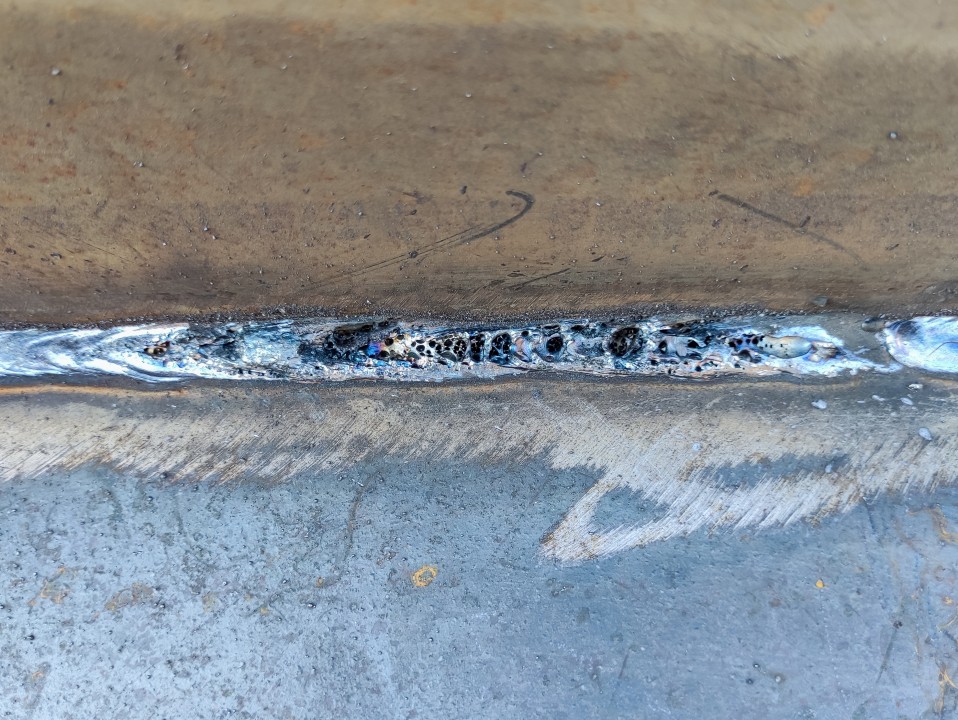Specialist Suggestions on What is Porosity in Welding and Just How to Resolve It
Specialist Suggestions on What is Porosity in Welding and Just How to Resolve It
Blog Article
Untangling the Secret of Porosity in Welding: Tips for Lessening Issues and Making The Most Of Quality
In the detailed globe of welding, porosity stays a consistent obstacle that can dramatically impact the high quality and honesty of bonded joints. Recognizing the variables that contribute to porosity development is essential in the quest of remarkable welds. By untangling the mystery of porosity and carrying out efficient techniques for flaw minimization, welders can boost the criteria of their job to accomplish exceptional high quality end results. As we look into the depths of porosity in welding, revealing the secrets to its prevention and control will be vital for specialists looking for to master the art of top quality weldments.
Comprehending Porosity in Welding
Porosity in welding, a common concern run into by welders, refers to the existence of gas pockets or gaps in the bonded material, which can jeopardize the integrity and high quality of the weld. These gas pockets are normally caught throughout the welding procedure because of different variables such as improper protecting gas, infected base materials, or incorrect welding parameters. The formation of porosity can compromise the weld, making it at risk to fracturing and deterioration, ultimately bring about architectural failings.
By acknowledging the importance of preserving correct gas securing, ensuring the sanitation of base products, and maximizing welding setups, welders can substantially decrease the likelihood of porosity formation. Overall, a comprehensive understanding of porosity in welding is important for welders to produce high-quality and long lasting welds.

Common Causes of Porosity
When inspecting welding procedures for possible quality problems, comprehending the usual causes of porosity is vital for keeping weld stability and preventing architectural failings. Porosity, characterized by the visibility of dental caries or spaces in the weld steel, can considerably endanger the mechanical properties of a bonded joint. One common root cause of porosity is incorrect securing gas insurance coverage. Poor shielding gas circulation rates or inappropriate gas mixes can result in atmospheric contamination, causing porosity development.
Furthermore, welding at improper specifications, such as exceedingly high traveling rates or currents, can generate excessive turbulence in the weld pool, trapping gases and creating porosity. By attending to these common reasons via proper gas Home Page securing, material prep work, and adherence to ideal welding criteria, welders can decrease porosity and improve the high quality of their welds.
Techniques for Porosity Prevention
Applying reliable preventative measures is critical in reducing the occurrence of porosity in welding processes. One technique for porosity prevention is guaranteeing appropriate cleansing of the base steel prior to welding. Impurities such as oil, oil, corrosion, and paint can result in porosity, so comprehensive cleansing utilizing proper solvents or mechanical methods is vital.

Making use of high-grade filler materials and shielding gases that are suitable for the base steel and welding process can dramatically minimize our website the threat of porosity. Furthermore, preserving proper welding parameters, such as voltage, existing, take a trip speed, and gas flow rate, is crucial for porosity prevention.
Furthermore, utilizing correct welding techniques, such as preserving a constant traveling speed, electrode angle, and arc size, can aid prevent porosity (What is Porosity). Ample training of welders to ensure they adhere to ideal methods and quality control procedures is likewise important in decreasing porosity issues in welding

Finest Practices for Top Quality Welds
One secret practice is keeping correct tidiness in the welding area. Extensively cleansing the work surface and bordering area prior to welding can assist reduce these problems.
Another ideal method is to meticulously choose the suitable welding specifications for the particular products being joined. Correct parameter choice ensures optimum weld infiltration, blend, and overall quality. Using premium welding consumables, such as electrodes and filler steels, can significantly influence the last weld quality.
Relevance of Porosity Control
Porosity control plays an important duty in guaranteeing the stability and quality of welding joints. Porosity, defined by the presence of cavities or gaps within the weld metal, can substantially compromise the mechanical residential properties and structural integrity of the weld. Extreme porosity damages the weld, making it much more vulnerable to breaking, rust, and general failing under functional loads.
Efficient porosity control is vital for preserving the preferred mechanical residential or commercial properties, such as toughness, ductility, and toughness, of the bonded joint. What is Porosity. By reducing porosity, welders can enhance index the general quality and dependability of the weld, guaranteeing that it satisfies the performance needs of the designated application
In addition, porosity control is essential for achieving the preferred aesthetic appearance of the weld. Too much porosity not just damages the weld yet also interferes with its aesthetic charm, which can be essential in markets where visual appeals are essential. Correct porosity control strategies, such as using the appropriate protecting gas, regulating the welding criteria, and guaranteeing appropriate sanitation of the base materials, are vital for creating high-grade welds with minimal defects.

Conclusion
In conclusion, porosity in welding is a typical problem that can endanger the high quality of the weld. By comprehending the reasons for porosity and applying correct avoidance techniques, welders can minimize problems and achieve better welds. It is vital to manage porosity in welding to make sure the honesty and toughness of the end product. Carrying out ideal techniques for porosity control is critical for achieving ideal welding results.
Report this page